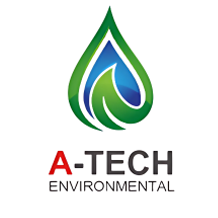FAQ's
Frequently Asked Questions
A mold inspection/investigation is recommended:
If there has been a recent water event (flood/leak),
If there is a musty odor or if people are experiencing symptoms in the space and feel better when they leave.
Before any real estate transaction.
After mold remediation has been completed.
A typical mold inspection is a thorough investigation. It involves the inspector talking to the property owner about any areas where they have seen mold, where a musty odor has been detected, or where there have been moisture problems or water damage in the past. The inspector will go over the house thoroughly, looking at the building materials and areas that may be prone to mold growth. The inspector will typically do a basic air sampling of the inside and outside (for baseline comparison) for airborne mold spores. They may (or may not) suggest more specific air sampling depending on what they find in their visual inspection. These are sent to a third-party lab for analysis. If mold is detected, the inspector will try to find the source of the moisture that is causing the mold and talk to the homeowner to develop a remediation plan
Using a third-party to do the initial inspection and/or post remediation verification ensures that you are receiving an objective, honest assessment of your situation. There is no conflict of interest. There might be a desire to skip this step, save a few hundred dollars and just hire a remediation company, however, there is a risk of getting a company that exaggerates the scope of work to cover the cost of their “free estimate”. Additionally, in New York State, mold remediation companies and mold inspectors are required to be two separate entities, protecting you from conflicts of interest.
Clearance tests are not mandatory in most cases, however, it is highly recommended. A PRV verifies that the remediation has been successfully completed and verifies that the indoor air quality is safe to re-occupy the space. Additionally, documentation verifying the history of the property, including a PRV, is very helpful if the property is ever up for sale. Having this documentation expedites the selling process.
It depends. If a small amount of mold is on the surface, a damp cloth with vinegar can be used. However, if the mold is growing within the building materials, behind the walls and a mold colony is established, a professional is recommended. We can honestly let you know if something is surface mold or more extensive. Depending on the situation, if not properly contained and removed, a DIY’er can release tens of thousands of spores into the air, making the situation much worse, throughout the home
Volatile organic compounds (VOCs) are emitted as gases from certain solids or liquids. VOCs include a variety of chemicals, some of which may have short-term and long-term adverse health effects. VOCs are emitted by a wide array of products numbering in the thousands. For Example: Paints and lacquers, paint strippers, cleaning supplies, pesticides, building materials and furnishings, office equipment such as copiers and printers, graphics and craft materials including glues and adhesives, permanent markers, and photographic solutions
Off-gassing is the airborne release of a chemical in vapor form. Prolonged exposure can cause headaches and other symptoms. Many types of furniture do their heaviest off-gassing for about a month after they are made. On the other hand, some products may continue off-gassing for years. If you are concerned about the levels of formaldehyde or other VOC’s, Oasis can test the levels in your home or workplace
There is a wide variety of items that can create dust. Everything from paper products, skin cells, or allergens-such as dog or cat dander or dust mites which can be a respiratory irritant. There is also construction dust that may contain asbestos, lead or silica-which can be harmful if inhaled. Often renovations in an adjacent unit or office will
cause dust and odor infiltration. Depending on your needs, we can test for all of these potential irritants and hazardous materials.
We start with a visual inspection and can collect wipe samples to test for one or all of the components of the fire (e.g., char, soot, ash, etc.). There are often harmful chemicals released in a fire and toxic residue. This can also be tested for. After a fire cleanup has been done, a Post Cleanup Verification is highly recommended.
Sick Building Syndrome is caused by several factors. Commonly cited causes are inadequate ventilation, chemical contaminants from indoor sources, and chemical contaminants from outdoor sources. Inadequate ventilation is one of the most often cited reasons. If your employees are complaining of not feeling well in the office, Oasis can check the indoor air quality of your office (or home) and make any recommendations on improving the indoor air quality.
